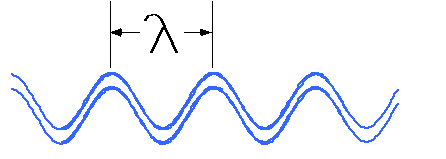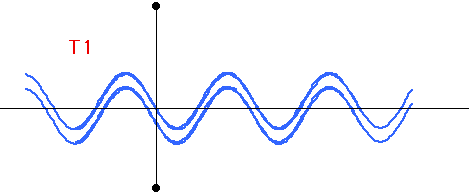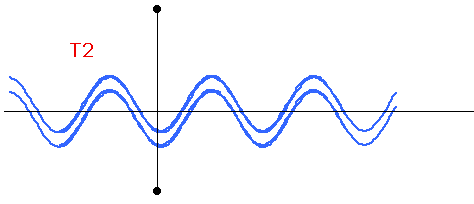|
Wave Properties
wavelengths and phase shifts
The wavelength
([Image: ]
)
of a wave is the
distance from one crest to the next.

The phase of a wave, measured in degrees, where 360 degrees is one
wavelength, indicates the current position of the wave
relative to a reference position.
For example, if at time T1 the position of the wave along the vertical line
was:

while at time T2, the position of the wave was:

then the wavelength did not change from T1 to T2, but the wave's position
relative to the vertical line changed 1/4 wavelength, or 90 degrees.
This change is called a "phase shift".

radar signals
|
|

signal scattering
|
|




